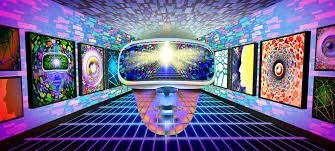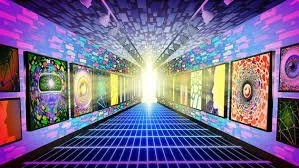
I think there are several ways NFTs could be given utility beyond their original projects! NFTs, or non-fungible tokens, have taken the digital world by storm, offering a new way to authenticate ownership and create scarcity in the digital realm. However, despite their growing popularity, NFTs do come with limitations that need to be addressed for them to reach their full potential.
One of the major challenges is establishing a standard for interoperability across different platforms. Currently, there are various blockchain networks and marketplaces that support NFTs, but they often operate independently. One of the main challenges is establishing This lack of interoperability makes it difficult for NFT holders to seamlessly transfer their assets between platforms or utilise them across different ecosystems. Furthermore, the environmental impact of NFTs has come under scrutiny. Many NFTs are minted on blockchain networks that rely on proof-of-work (PoW) consensus algorithms, such as Ethereum. The energy consumption associated with these networks is significant and has raised concerns about the sustainability of NFTs
The potential for NFTs to transcend their original projects and offer wider utility is still unfolding, but exciting possibilities are emerging. Addressing these limitations is crucial for the wider adoption and utility of NFTs. By finding solutions that promote interoperability, scalability, and sustainability, NFTs can truly revolutionise industries beyond their original projects.

Challenges and considerations for expanding NFT
As we explore the potential avenues for giving NFTs more practical functionalities, it's essential to address the challenges and considerations that come with expanding NFT utility. One of the main challenges is establishing a standard for interoperability across different blockchain networks and marketplaces. Currently, NFTs are often confined to specific ecosystems, making it difficult for holders to transfer their assets seamlessly. Creating a universal standard for NFTs would enable interoperability and unlock the full potential of these digital assets.
Building secure and user-friendly platforms, establishing common standards, and addressing legal frameworks will be crucial for wider adoption and responsible implementation.
Overall, the potential for NFTs to offer utility beyond their original projects is vast and exciting. As the technology matures and collaboration increases, we can expect to see innovative use cases emerge, blurring the lines between digital and physical worlds and creating new forms of value and ownership.
It's important to remember that this is a rapidly evolving field, and new possibilities for NFT utility are constantly being explored. The ideas discussed here are just a glimpse into the potential future of NFTs, and it will be fascinating to see how this technology continues to shape the digital landscape.

Ways to give NFTs utility
One idea is to use NFTs as membership tokens for online communities. For example, a community could issue NFTs to its members, which could grant them access to exclusive content, chat rooms, or other benefits. This could create a sense of belonging and make the community more engaging for its members.
Another idea is to use NFTs to track and verify the authenticity of physical goods. For example, a luxury brand could use NFTs to track the provenance of its products, or a company could use NFTs to track the chain of ownership for its products. This could help combat counterfeiting and ensure that consumers are getting authentic products.
One idea is to use NFTs as access passes for events or experiences. For example, an NFT could be used to unlock exclusive content, access to a virtual or real-world event, or other perks. hese NFTs could be used to verify the authenticity of the ticket, and they could also be used to track the resale of the ticket. This could make the ticketing process more secure and transparent, and it could also provide a way for the original issuer of the ticket to get a cut of any resale profits.
Another idea is to use NFTs to represent digital items that can be used in multiple games or other virtual environments. This could allow players to use the same items across different games, or to sell or trade their items with other players.
Another idea for NFT utility is gamification. Gamification is the process of adding game-like elements to non-game activities. For example, a company could use NFTs to gamify its loyalty program. This could involve using NFTs to track points and rewards, and could encourage users to engage more with the program.
Another idea: social media. NFTs could be used to create a more engaging social media experience. For example, NFTs could be used to create digital collectibles that users could share and trade on social media platforms. Or, NFTs could be used to create virtual goods that could be used in augmented reality or virtual reality environments.

Conclusion
As the NFT market continues to evolve, the potential for giving NFTs utility beyond their original projects is vast. From gaming and art to music and real estate, NFTs have the power to revolutionize various industries. However, addressing the limitations, challenges, and considerations associated with NFTs is crucial for their widespread adoption and long-term success. The journey towards maximizing the utility of NFTs is just beginning, and the possibilities are endless. As technology continues to advance and creative minds push the boundaries of what's possible, we can expect to see even more innovative use cases and applications for NFTs in the years to come. The future of NFTs is bright, and it's only just getting started.
Zeegirl 🌻